 | Back to e-WV
| Back to e-WV
 The West Virginia Encyclopedia
The West Virginia Encyclopedia
 | Back to e-WV
| Back to e-WV
 The West Virginia Encyclopedia
The West Virginia Encyclopedia
This prolonged vendetta was the most notorious of several feuds that took place in central Appalachia in the late 19th century. It pitted the family of “Devil Anse” Hatfield, which resided mostly in Logan County in West Virginia (including present Mingo County), against the family of Randolph McCoy, which lived primarily across the Tug Fork in adjacent Pike County, Kentucky. Although the feud spanned nearly a quarter of a century, most of the events centered around five isolated moments. The events—and, more importantly, the sensationalized reporting of the events—would forever change the image Americans have of West Virginia and the mountain region.
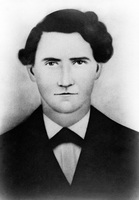
Some attribute the hostilities between the two families to the 1865 murder of Randolph McCoy’s brother Harmon (pictured here), a Union soldier in the Civil War. His death likely was the result of Civil War bushwhacker violence, which was prevalent in the region. Others, however, think McCoy was murdered by Devil Anse’s uncle Jim Vance.
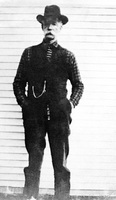
The next significant event occurred in 1878, when Randolph McCoy accused fellow Pike Countian and Devil Anse relative Floyd Hatfield (shown here) of stealing a hog. Floyd Hatfield was acquitted, in part, due to the testimony of Randolph’s nephew Bill Staton. Members of the McCoy clan exacted revenge by murdering Staton.
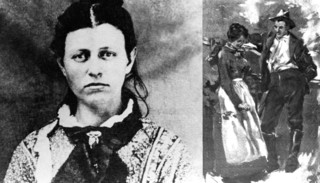
Tensions increased at the spring 1880 elections at Blackberry Creek in Pike County. Rose Anna McCoy (left), Randolph’s daughter, slipped away from the election grounds with Devil Anse’s son Johnse, who was visiting from Logan County. Devil Anse believed Johnse was being held by the McCoys against his will and led an armed rescue, which further exacerbated tensions. Rose Anna McCoy’s and Johnse Hatfield’s off-and-on relationship, which may have produced an illegitimate child, galled both families for years to come. This part of the saga was later romanticized by storytellers as a “Romeo and Juliet” love story (right, from A Mountain Feud).
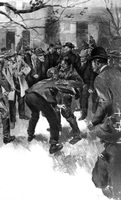
Much worse trouble ensued at the Blackberry Creek election in 1882. Devil Anse’s brother, Ellison Hatfield was mortally wounded in a drunken brawl by three McCoy brothers, apparently in an argument over a small debt owed on a fiddle. (Sketch from A Mountain Feud).
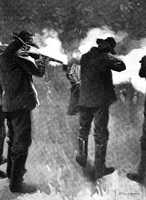
Tolbert, Pharmer, and Randolph McCoy Jr., sons of Randolph, were captured by the Hatfields for attacking Ellison at the election. Once Ellison died of his wounds, the three boys were tied to pawpaw bushes on the Kentucky side of the Tug and shot dead. (Illustration from A Mountain Feud)
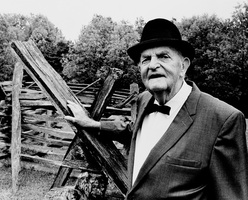
Following the killings of 1882, the feud simmered as McCoys attempted unsuccessfully to have Hatfields arrested and tried in the courts. The governor of Kentucky requested extradition from West Virginia Governor E. Willis Wilson, who refused. At times it appeared there might be armed conflict between the two states. In a show of gratitude, Devil Anse Hatfield named a son after Governor Wilson. Willis Hatfield, Devil Anse’s last surviving son, is shown here in 1970 at age 82.
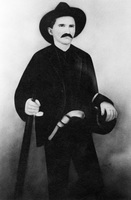
The McCoys suffered another great loss on the night of January 1, 1888, when Hatfields, led by Devil Anse’s uncle Jim Vance, set fire to the family’s Pike County cabin. Calvin and Alifair, Randolph McCoy’s grown children, were killed in the cabin raid, and their mother, Sarah, severely bludgeoned. This atrocity brought matters to a head, putting the Hatfields on the defensive for the duration of the conflict, hunted in their own West Virginia neighborhoods. Vance was soon killed by a posse of Kentuckians led by McCoy partisan Frank Phillips (shown here), and the two sides fought a pitched battle at Grapevine Creek, near present Matewan, on January 19. Eventually four Hatfield sons and others were indicted for the cabin raid, and their cousin, Ellison Mounts, was hanged in Pikeville, February 18, 1890. This ended the family war.
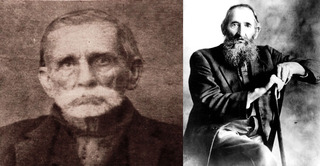
Randolph McCoy (left) became an embittered old man, running a ferry in Pikeville and talking to anyone who would listen about his sufferings at the hands of the Hatfields. He died while tending a cook fire on March 28, 1914, at the age of 88. He and Sarah McCoy are buried in the Dils Cemetery in Pikeville. Devil Anse Hatfield (right) lived another three decades after the violence subsided and relished his growing celebrity. Certain interviews of his, particularly with the Wheeling Intelligencer and with New York World reporter T. C. Crawford, helped to sensationalize the vendetta. He died January 6, 1921, and is buried under a life-size statue of himself in Logan County.
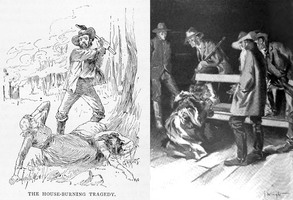
Even before it ended, the feud had become the stuff of legends . . . and Appalachian stereotypes. The Hatfield-McCoy Feud was exacerbated, especially in its later stages, by enterprising detectives, imperfectly deputized posses, sensationalizing newspaper men, and meddling lawyers. As the story became more outrageous with every telling and illustration (such as these images from American Vendetta and A Mountain Feud), West Virginia and barbaric feuding became synonymous in the minds of many. In reality, family feuds have been uncommon in the state’s history with the Hatfields and McCoys being the major exception.